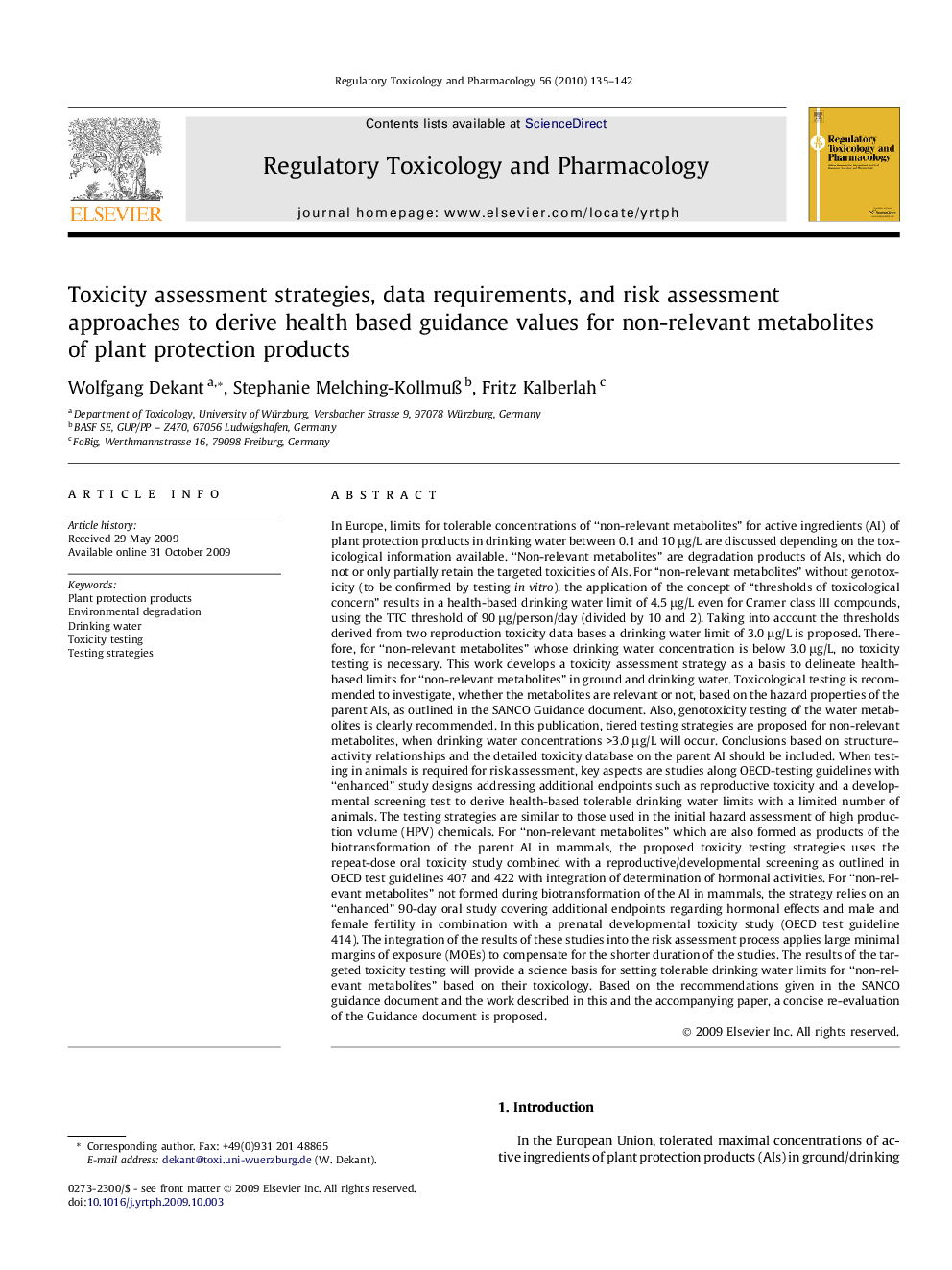| کد مقاله | کد نشریه | سال انتشار | مقاله انگلیسی | نسخه تمام متن |
|---|---|---|---|---|
| 2592599 | 1132033 | 2010 | 8 صفحه PDF | دانلود رایگان |

In Europe, limits for tolerable concentrations of “non-relevant metabolites” for active ingredients (AI) of plant protection products in drinking water between 0.1 and 10 μg/L are discussed depending on the toxicological information available. “Non-relevant metabolites” are degradation products of AIs, which do not or only partially retain the targeted toxicities of AIs. For “non-relevant metabolites” without genotoxicity (to be confirmed by testing in vitro), the application of the concept of “thresholds of toxicological concern” results in a health-based drinking water limit of 4.5 μg/L even for Cramer class III compounds, using the TTC threshold of 90 μg/person/day (divided by 10 and 2). Taking into account the thresholds derived from two reproduction toxicity data bases a drinking water limit of 3.0 μg/L is proposed. Therefore, for “non-relevant metabolites” whose drinking water concentration is below 3.0 μg/L, no toxicity testing is necessary. This work develops a toxicity assessment strategy as a basis to delineate health-based limits for “non-relevant metabolites” in ground and drinking water. Toxicological testing is recommended to investigate, whether the metabolites are relevant or not, based on the hazard properties of the parent AIs, as outlined in the SANCO Guidance document. Also, genotoxicity testing of the water metabolites is clearly recommended. In this publication, tiered testing strategies are proposed for non-relevant metabolites, when drinking water concentrations >3.0 μg/L will occur. Conclusions based on structure–activity relationships and the detailed toxicity database on the parent AI should be included. When testing in animals is required for risk assessment, key aspects are studies along OECD-testing guidelines with “enhanced” study designs addressing additional endpoints such as reproductive toxicity and a developmental screening test to derive health-based tolerable drinking water limits with a limited number of animals. The testing strategies are similar to those used in the initial hazard assessment of high production volume (HPV) chemicals. For “non-relevant metabolites” which are also formed as products of the biotransformation of the parent AI in mammals, the proposed toxicity testing strategies uses the repeat-dose oral toxicity study combined with a reproductive/developmental screening as outlined in OECD test guidelines 407 and 422 with integration of determination of hormonal activities. For “non-relevant metabolites” not formed during biotransformation of the AI in mammals, the strategy relies on an “enhanced” 90-day oral study covering additional endpoints regarding hormonal effects and male and female fertility in combination with a prenatal developmental toxicity study (OECD test guideline 414). The integration of the results of these studies into the risk assessment process applies large minimal margins of exposure (MOEs) to compensate for the shorter duration of the studies. The results of the targeted toxicity testing will provide a science basis for setting tolerable drinking water limits for “non-relevant metabolites” based on their toxicology. Based on the recommendations given in the SANCO guidance document and the work described in this and the accompanying paper, a concise re-evaluation of the Guidance document is proposed.
Journal: Regulatory Toxicology and Pharmacology - Volume 56, Issue 2, March 2010, Pages 135–142